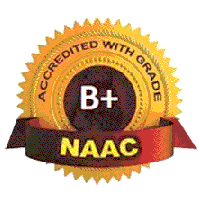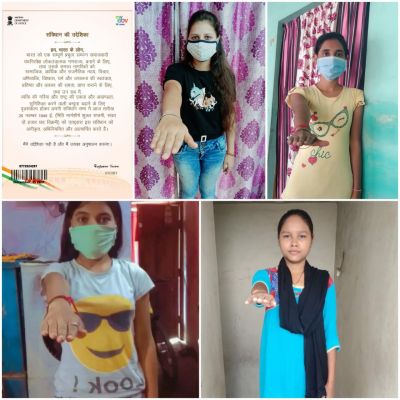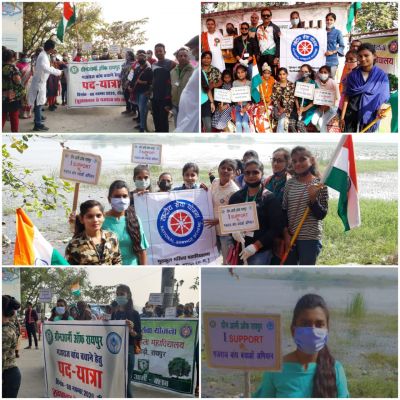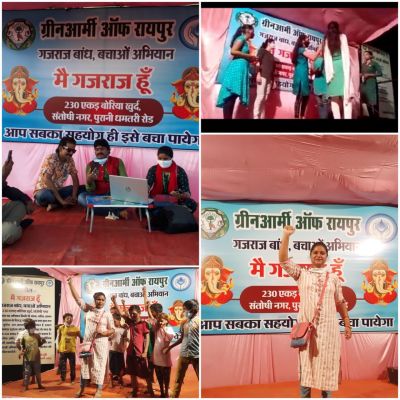1.1 Number of courses offered by the Institution across all programs during the last five years.
1.2 Number of programs offered year-wise for last five years
2.1 Number of students enrolled year wise during the last five years
2.2 Number of seats earmarked for reserved category as per GOI/ State Govt rule year wise during last five years
2.3 Number of outgoing/final year students year wise during the last five years
3.1 Number of full time teachers presently working in the institutions
3.2 Number of sanctioned posts year-wise during last five years
4.1 Total number of classrooms and seminar halls
4.2 Total Expenditure excluding salary year-wise during last five years (INR in Lakhs)
4.3 Number of Computers
1.1.3 Teachers of the Institution participate in following activities related to curriculum development and assessment of the affiliating University and/are represented on the following academic bodies during the last five years
1.2.1 Percentage of Programmes in which Choice Based Credit System (CBCS)/ elective course system has been implemented.
1.2.2 Number of Add on /Certificate programs offered during the last five years.
1.2.3 Average percentage of students enrolled in Add-on/Certificate programs as against the total number of students during the last five years.
1.3.2 Average percentage of courses that include experiential learning through project work/field work/internship during last five years.
1.3.3 Percentage of students undertaking project work/field work/internship (Data for the latest completed academic year)
1.4.1 Institution obtains feedback on the syllabus and its transaction at the institution from the takeholders.
1.4.2 Feedback process of the Institution may be classified as follows:-
1. Feedback collected, analysed and action taken and feedback available on website
2. Feedback collected, analysed and action has been taken
3. Feedback collected and analysed
4. Feedback collected
5. Feedback not collected
2.1.1 Average Enrolment percentage (Average of last five years)
2.1.2 Average percentage of seats filled against reserved categories (SC, ST, OBC, Divyangjan, etc. as per applicable reservation policy ) during the last five years (exclusive of supernumerary seats)
2.2.2 Student- Full time teacher ratio (Data for the latest completed academic year) Number of Students Across all Programme.
2.3.3 Ratio of students to mentor for academic and other related issues (Data for the latest completed academic year)
2.4.1 Average percentage of full time teachers against sanctioned posts during the last five years
2.4.2 Average percentage of full time teachers with Ph. D. / D.M. / M.Ch. / D.N.B Super specialty / D.Sc. / D.Litt. during the last five years (consider only highest degree for count)
2.4.3 Average teaching experience of full time teachers in the same institution (Data for the latest completed academic year in number of years)
2.6.3 Average pass percentage of Students during last five years
3.1.1 Grants received from Government and non-governmental agencies for research projects, endowments, Chairs in the institution during the last five years (INR in Lakhs)
3.1.2 Percentage of teachers recognized as research guides (Latest completed academic year)
3.2.2 Number of workshops/seminars conducted on Research Methodology, Intellectual Property Rights (IPR) and entrepreneurship during the last five years
3.3.1 Number of Ph.Ds registered per eligible teacher during the last five years
3.3.2 Number of research papers per teachers in the Journals notified on UGC website during the last five years.
3.3.3 Number of books and chapters in edited volumes/books published and papers published in national/ international conference proceedings per teacher during last five years
3.4.3 Number of extension and outreach programs conducted by the institution through NSS/NCC, Government and Government recognised bodies during the last five years
3.4.4 Average percentage of students participating in extension activities at 3.4.3. above during last five years
3.5.2 Number of functional MoUs with institutions, other universities, industries, corporate houses etc. during the last five years
4.1.3 Percentage of classrooms and seminar halls with ICTenabled facilities such as smart class, LMS etc.
5.3.3 Average number of sports and cultural events/competitions in which students of the Institution participated during last five years (organised by the institution/other institutions).
6.2.3 Implementation of e-governance in areas of operation.
6.3.4 Average percentage of teachers undergoing online/ face-to-face Faculty Development Programmes (FDP) during the last five years (Professional Development Programmes, Orientation / Induction Programmes, Refresher Course, Short Term Course ).
6.5.3 Quality assurance initiatives of the institution include.
7.1.2 The Institution has facilities for alternate sources of energy and energy conservation measures
7.1.4 Water conservation facilities available in the Institution
7.1.5: Green campus initiatives include:
1. Policy Document
2. Pedestrian Friendly pathways
3. Ban on use of Plastic
4. Landscaping with trees and plants
7.1.6 Quality audits on environment and energy are regularly undertaken by the Institution and any awards received for such green campus initiatives.
7.1.10: The Institution has a prescribed code of conduct for students, teachers, administrators and other staff and conducts periodic programmes in this regard.
| https://gmm.ac.in/uploads/upload_images/1652777348.pdf |




.jpg)



.jpg)
.jpeg)
.jpeg)
.jpeg)